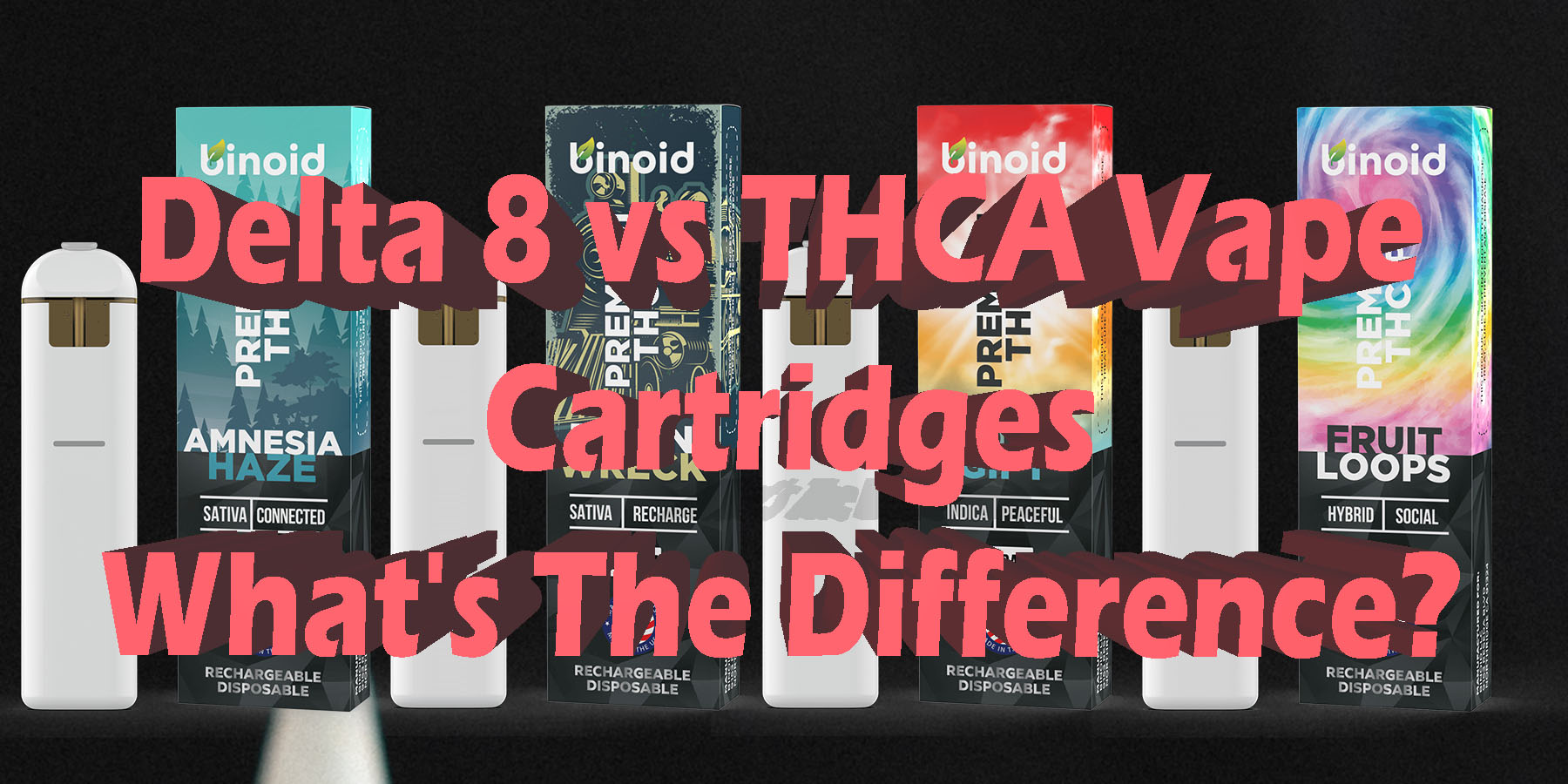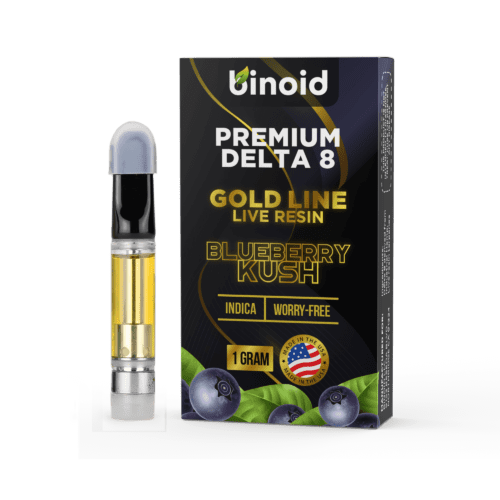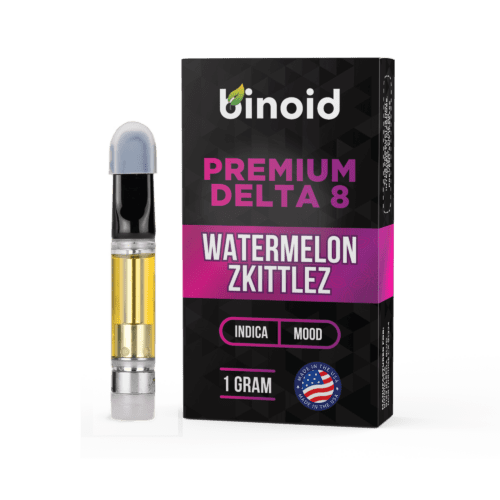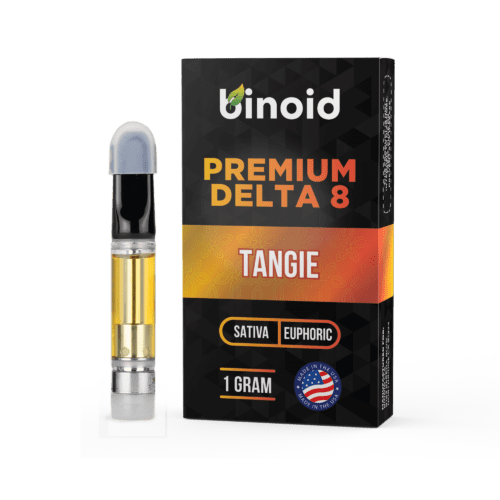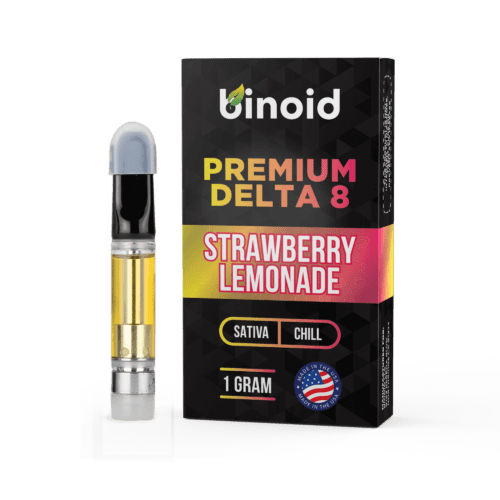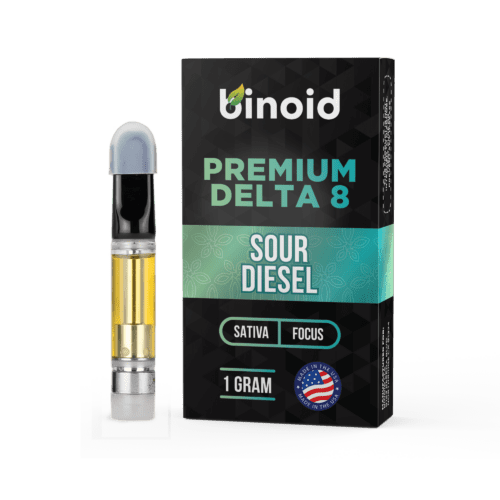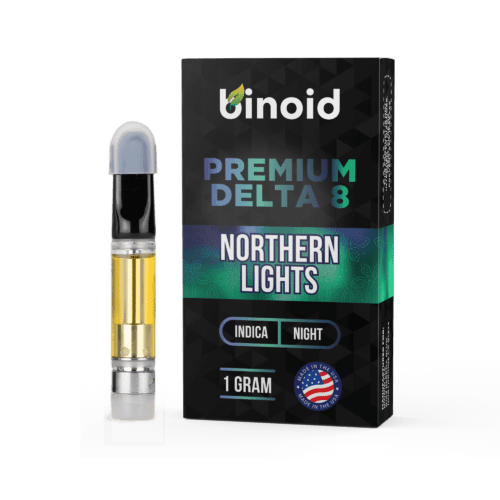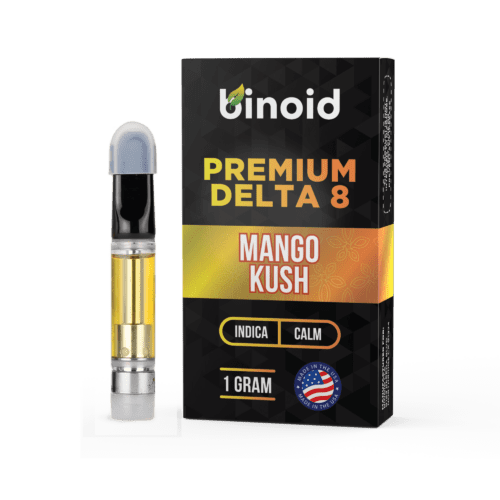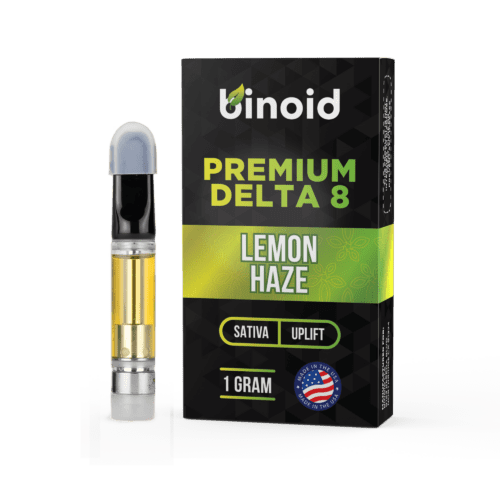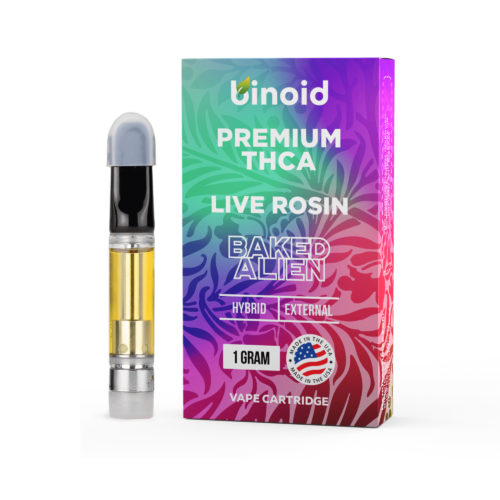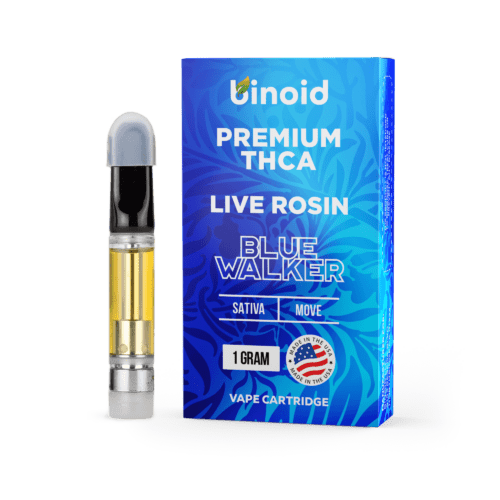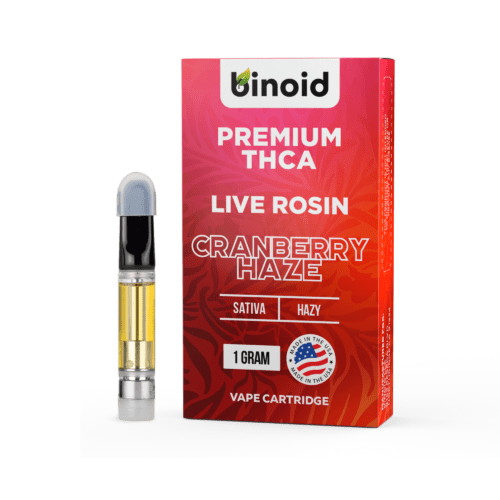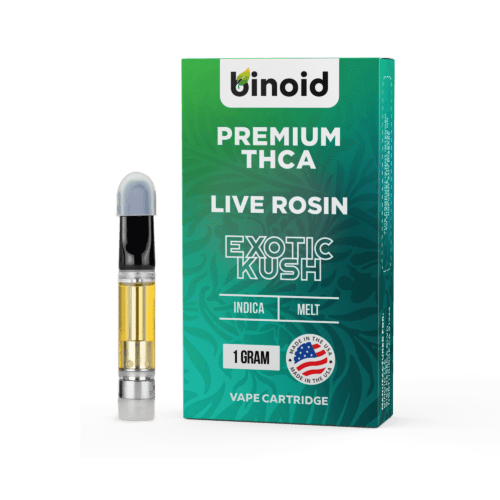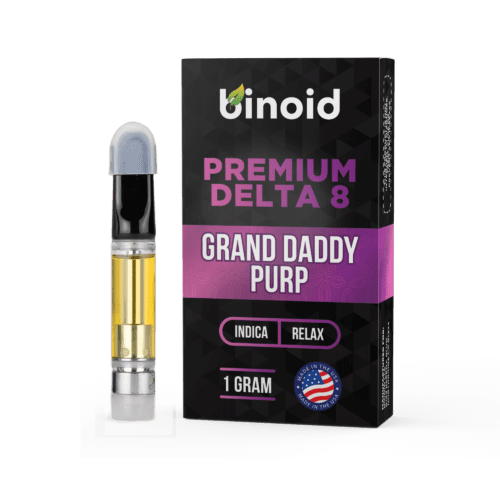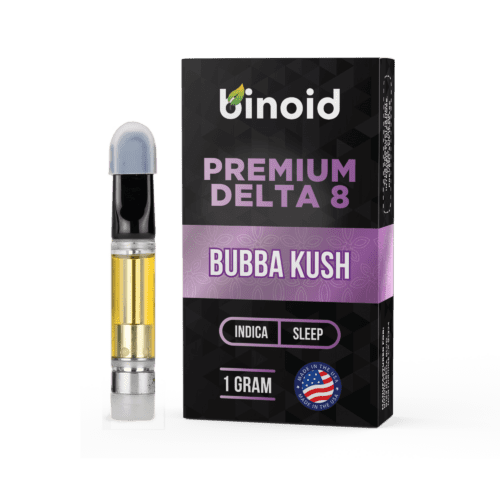As the modern cannabinoid landscape continues its rapid and fascinating evolution, a new class of consumer has emerged—one who seeks not just a product, but a precise and predictable experience. This journey of discovery has moved far beyond the simple choices of the past, now entering a realm of sophisticated chemical distinctions and nuanced effects.
The vessel for this exploration remains the sleek and efficient vape cartridge, a technological marvel that delivers the potential of the hemp plant with unparalleled speed and control. Within this ever-advancing arena, a particularly compelling matchup has taken center stage, pitting a well-established fan favorite against a powerful and intriguing newcomer. This is the ultimate showdown between the tried-and-true and the transformative: a deep dive into the world of Delta 8 vape cartridges vs. THCA vape cartridges.
To Buy Cannabinoid Vape Cartridges Click Here
Recommended products
What are Cannabinoids?
To truly appreciate the profound differences and unique characteristics in the Delta 8 and THCA matchup, one must first possess a firm understanding of the fundamental building blocks of their composition: cannabinoids. In the broadest scientific sense, cannabinoids represent a diverse class of chemical compounds that are defined by their ability to interact with and influence the body’s endocannabinoid system. These compounds are the primary active ingredients responsible for the effects associated with the cannabis plant, but their origins are not confined to botanical sources alone.
The scientific community generally categorizes these molecules into three distinct groups: phytocannabinoids, which are synthesized by plants (most famously, the Cannabis sativa plant); endocannabinoids, which are produced naturally within the bodies of humans and other vertebrate animals; and synthetic cannabinoids, which are created artificially in a laboratory setting. Phytocannabinoids, like the Delta 8 and THCA we are exploring today, have a molecular structure that allows them to interface with our bodies’ internal systems, orchestrating a complex symphony of physiological responses.
The discovery and subsequent understanding of this intricate relationship are rooted in the endocannabinoid system (ECS), a crucial and sophisticated cell-signaling network. The ECS plays a vital role in regulating a vast array of functions to maintain a state of internal physiological balance, a concept known as homeostasis. This system is composed of three core components: endocannabinoids (such as anandamide, often called the “bliss molecule,” and 2-arachidonoylglycerol, or 2-AG), which are the body’s own naturally produced cannabinoid molecules; receptors that these compounds bind to (primarily CB1 receptors, found mostly in the brain and central nervous system, and CB2 receptors, located predominantly in the peripheral nervous system and immune cells); and enzymes that metabolize and break down the endocannabinoids once they have served their signaling purpose.
Phytocannabinoids are able to produce their effects because their molecular shapes allow them to mimic or otherwise influence our natural endocannabinoids, binding to these same receptors and thus modulating cellular activity.
Within the vast family of over one hundred identified phytocannabinoids, there is a clear and important distinction between major and minor compounds, as well as a distinction between their active and acidic forms. Major cannabinoids, such as cannabidiol (CBD) and the well-known Delta 9 THC, are the most abundant active compounds and have been the subject of extensive scientific research and public discussion for many decades.
In contrast, minor cannabinoids exist in much smaller, often trace, amounts. Delta 8 THC falls squarely into this category. Furthermore, most cannabinoids exist in the raw cannabis plant in an acidic form, such as THCA and CBDA. These are known as cannabinoid acids and are the biosynthetic precursors to the active compounds we are more familiar with. THCA, for example, is a major cannabinoid in its raw form, often the most abundant compound in uncured hemp flower.
This fundamental distinction between different types of cannabinoids is absolutely essential to understanding the landscape of the modern hemp industry. The 2018 Farm Bill, a landmark piece of federal legislation, federally legalized hemp and all hemp-derived products, provided they contain no more than 0.3% Delta 9 THC by dry weight.
This legal framework, while sharply focused on restricting the specific molecule of Delta 9 THC, inadvertently created a massive opportunity for the scientific exploration and commercialization of other cannabinoids that could be legally sourced from compliant hemp. This legal pathway, combined with significant advancements in agricultural breeding, chemical conversion, and purification techniques, has directly enabled the rise of products centered around compounds like the isomer Delta 8 and the acidic precursor THCA, empowering consumers with a sophisticated palette of experiences.
Recommended products
What are Cannabinoid-Infused Vape Cartridges and How are They Typically Created?
Cannabinoid-infused vape cartridges, often simply called “vape carts,” are small, pre-filled containers that hold a liquid formulation of purified cannabinoid distillate and, typically, aromatic terpenes. These self-contained units are meticulously engineered to attach to a compatible battery, commonly known as a vape pen or 510-thread battery, which provides the necessary electrical power to heat the liquid and instantaneously transform it into an inhalable vapor.
The primary function of a vape cartridge is to offer a convenient, discreet, and highly efficient method for consuming cannabinoids. Unlike other consumption methods that require more preparation or have a significantly delayed onset, such as edibles, vaping allows for the rapid delivery of the active compounds directly into the bloodstream through the vast surface area of the lungs. This results in effects that can be felt almost immediately, often within a matter of minutes, providing users with unparalleled control over their experience as they can take small draws and precisely gauge the effects before deciding to continue.
The marketplace for cannabinoid vape cartridges is incredibly diverse, with products available in a multitude of shapes, sizes, and materials designed to suit various consumer preferences and accommodate ongoing technological advancements. The most ubiquitous size is the 1-gram (or 1mL) cartridge, which offers a substantial amount of oil that serves as a happy medium for both regular and occasional users. However, smaller half-gram options remain popular for those wishing to sample a new strain, while larger 2-gram, 3-gram, and even 5-gram disposable vape pens have emerged for users seeking maximum convenience and longevity.
In terms of shape, the classic cylindrical design with a 510-thread connection remains the undisputed industry standard due to its near-universal compatibility with the vast majority of batteries. Yet, some brands have pioneered proprietary pod-style systems that often feature a sleeker, more modern aesthetic and a magnetic connection, although they require a specific, brand-locked device to function. The materials used in cartridge construction are also a key differentiator, profoundly impacting performance, safety, and the purity of the user experience, with a clear hierarchy from basic plastics to premium glass and ceramic constructions.
Recommended products
While external designs may vary, the core components of a standard vape cartridge are universal and work in precise concert to deliver a smooth, flavorful, and consistent experience. Each part plays a critical, non-negotiable role in the device’s function, from the point of contact with the user to the electrical connection with the power source. A detailed breakdown reveals the intricate design that ensures safety and proper function:
Mouthpiece: This is the uppermost part of the cartridge through which the user inhales the vapor. Mouthpieces are crafted from a variety of materials, including common options like plastic, more premium choices like heat-resistant ceramic, and stylish alternatives like metal or wood. The shape can also differ—flat, rounded, or ergonomically contoured (“duckbill”)—to enhance comfort. The material choice is not merely aesthetic; ceramic mouthpieces, for instance, are excellent at dissipating heat, ensuring a cooler and more comfortable draw.
Tank/Reservoir (Chamber): The tank is the main body of the cartridge that holds the precious cannabinoid-infused oil. It must be transparent to allow the user to monitor the remaining liquid. While some budget cartridges may use polycarbonate plastic, high-quality tanks are almost exclusively made from borosilicate glass. This type of glass is highly durable and, most importantly, non-reactive, ensuring that there is no chemical leaching into the oil, which could alter the flavor and compromise the purity of the terpenes and cannabinoids.
Atomizer/Heating Element: The atomizer is the functional heart of the cartridge, responsible for heating the oil to its precise vaporization point (typically between 300-400°F). It consists of a heating coil wrapped around or embedded within a wicking material that draws in the oil. In modern, high-end cartridges, the atomizer core is made of a porous ceramic. This technology, often referred to by brand names like CCELL, provides exceptionally even heat distribution and a larger surface area, which prevents direct contact between the hot coil and the oil. This indirect heating is crucial for preventing burning, which would create a harsh taste and potentially harmful byproducts, and for preserving the delicate and complex flavor profile of the terpenes.
Base/Connector: The base is the bottom part of the cartridge that houses the atomizer and features the threading used to connect the device to a battery. The most common type is the 510-thread (referring to the 10 threads at 0.5 mm per thread), which has become the universal standard, ensuring interoperability between most cartridges and batteries on the market. The base also contains the airflow intakes—small holes that allow air to enter and mix with the vapor—and the electrical connection point that draws power from the battery to activate the heating element when the user inhales or presses a button.
The production of a cannabinoid-infused vape cartridge is a meticulous, multi-stage process that merges precision manufacturing with sophisticated chemical science to ensure a safe, effective, and enjoyable final product. This complex journey can be broken down into three distinct parts: the fabrication of the physical hardware, the formulation of the specialized oil, and the final assembly and rigorous quality control.
Recommended products
Part 1: How the Cartridge Itself is Made and Constructed
The manufacturing of the empty cartridge begins with the high-precision fabrication of its individual components in specialized facilities. The borosilicate glass for the tank is molded and cut to exact specifications. The ceramic for the atomizer core is created from refined mineral powders, which are then fired at extremely high temperatures and shaped, after which the metallic heating coil is carefully integrated. The mouthpiece and base are also manufactured, often through injection molding for plastics or CNC (Computer Numerical Control) machining for metals.
These separate parts are then assembled in a sterile, dust-free clean-room environment (often adhering to ISO standards) to prevent any contamination. Throughout this process, stringent quality control is paramount, with manufacturers conducting tests for air-tightness to prevent leaks, ensuring proper airflow resistance for a good draw, and verifying that the electrical connections are sound and the 510-threading is perfectly machined.
Part 2: How the Cannabinoid-Infused Vape Oil is Made
This highly scientific stage starts with legally compliant, high-quality hemp biomass. The cannabinoids are first extracted from the plant material using various methods. For stable distillates, supercritical CO2 or ethanol extraction is common. For more volatile, full-spectrum extracts rich in acidic cannabinoids, cold extraction methods using solvents like butane or propane are often used to create “live resin.”
After extraction, the oil is refined. For minor cannabinoids, this may involve complex isomerization to convert a precursor like CBD into the target molecule. For major cannabinoids, it may involve distillation to achieve high purity. Finally, this purified oil is formulated, often by reintroducing carefully selected terpene profiles to create the desired flavor, aroma, and strain-specific effects.
Part 3: Bringing It All Together
In the final stage, the precisely formulated cannabinoid and terpene mixture is gently heated to reduce its viscosity and is then carefully injected into the empty, assembled cartridges. This is typically done using automated filling machines in a sterile environment to ensure dosage consistency and prevent contamination. Once filled, the cartridges are securely capped or sealed to create an airtight container that prevents any leakage.
The last and arguably most critical step is comprehensive third-party lab testing. A statistically significant sample from each batch is sent to an independent, ISO-accredited laboratory. There, it is tested for potency (to confirm cannabinoid percentages), purity (to ensure it is free from residual solvents, heavy metals, pesticides, and microbial contaminants), and legal compliance (to verify the Delta 9 THC level is at or below the 0.3% threshold). Only after passing these rigorous tests is the batch approved for packaging and release to the market.
Recommended products
Breaking Down Today’s Cannabinoid Vape Cartridges Matchup: Delta 8 Vape Cartridges vs. THCA Vape Cartridges
With a clear understanding of cannabinoid fundamentals and vape cartridge production, we can now examine the main event. This is a particularly fascinating matchup because it pits a synthesized isomer against a natural acidic precursor, highlighting the incredible intersection of chemistry, technology, and legality in the modern hemp industry.
This is not a simple comparison of effects, but a deep dive into two fundamentally different types of products that, through different means, have become titans of the market. On one side stands Delta 8 THC, the reliable agent of manageable bliss, created through skillful chemistry. On the other stands THCA, the dormant powerhouse that, thanks to the simple application of heat, transforms into the most well-known cannabinoid of all.
Contender #1: Delta 8 Vape Cartridges
Delta 8 vape cartridges have firmly established themselves as a cornerstone of the modern hemp market, skyrocketing to popularity for offering a uniquely balanced and accessible experience that resonates with a broad audience. They represent a desirable middle ground that many consumers find incredibly appealing, effectively bridging the gap between the gentle, non-intoxicating properties of CBD and the more powerful, and sometimes overwhelming, intensity of Delta 9 THC.
These cartridges are widely celebrated for their ability to induce a state of serene relaxation, physical ease, and clear-headed bliss, often without the pronounced mental fogginess that can accompany other cannabinoids. This sterling reputation has made Delta 8 a go-to choice for an extensive range of users, from curious individuals just beginning their cannabinoid journey to seasoned enthusiasts seeking a more functional and manageable option for unwinding after a long day, enhancing a low-key social gathering, or simply finding a moment of calm in a hectic world.
At its core, Delta 8 THC (Delta-8-Tetrahydrocannabinol) is a fascinating cannabinoid that exists as a close chemical cousin to the more widely known Delta 9 THC. While it does occur naturally in the cannabis plant, it is classified as a minor cannabinoid because it is found in exceptionally small concentrations, often as a result of Delta 9 THC degrading over time due to oxidation. Its defining structural feature, which dictates its entire character, is a double bond located on the eighth carbon atom of its molecular chain.
This placement distinguishes it from Delta 9, where the bond is on the ninth carbon, and this subtle difference in molecular architecture is scientifically believed to be the primary reason for its unique interaction with the body. Using the analogy of a key and a lock, the body’s CB1 receptors act as the lock; while the Delta 9 “key” fits almost perfectly, the slightly altered shape of the Delta 8 “key” results in a lower binding affinity. This less perfect fit is thought to cause a noticeably milder and more body-focused psychoactive experience, prized for its clarity.
Because its natural scarcity makes direct extraction commercially unviable, the vast majority of Delta 8 is produced through a laboratory process called isomerization, where skilled chemists use a catalyst and controlled conditions to skillfully convert abundant, hemp-derived CBD into a pure, high-quality Delta 8 distillate, which must then be rigorously purified to ensure its safety and potency.
Recommended products
Now, the sheer variety of Delta 8 vape cartridges available on the market today is a powerful testament to the industry’s relentless innovation, offering a meticulously tailored experience for nearly every user. While the core active ingredient is always Delta 8 THC, the final product can be customized in a multitude of ways, with each variation below affecting the overall character, flavor, and performance of the vape:
Shapes & Sizes: Delta 8 cartridges overwhelmingly adhere to the industry standards, most commonly found in 1-gram cylindrical formats with the universal 510-threading. However, as brands seek to differentiate themselves and cater to specific user habits, consumers can also find smaller half-gram options for lighter use, larger 2-gram or even 3-gram disposables for ultimate convenience and extended enjoyment, and sleek, proprietary pod systems that pair with brand-specific batteries, often offering unique features or form factors.
How They’re Constructed: Premium Delta 8 cartridges are invariably built with high-quality, inert materials to ensure optimal performance, safety, and flavor preservation. This includes a non-reactive borosilicate glass tank to hold the viscous oil and an advanced ceramic core atomizer (such as CCELL technology) that provides consistent, low-temperature heating. This superior construction is critical for preventing the oil from burning, which can create a harsh, acrid taste, and ensures that the full spectrum of delicate terpenes is vaporized efficiently for a smooth, pure, and flavorful draw every time.
Potential Use of Live Resin or Live Rosin: To elevate the experience far beyond that of standard distillate, many top-tier Delta 8 cartridges incorporate live resin or live rosin. Live resin is a cannabis concentrate produced from fresh, flash-frozen cannabis plants, a process that preserves a much wider and more volatile range of terpenes and other aromatic compounds compared to traditional methods that use dried and cured material. Live rosin is a highly prized solventless extract created using only heat and pressure. The addition of these full-spectrum extracts to Delta 8 distillate results in a profoundly more robust, authentic flavor and a more nuanced, well-rounded experience often referred to as the “entourage effect.”
Strain-Infused: The perceived effects of a Delta 8 cartridge are heavily influenced by its specific terpene profile, which is carefully formulated to mimic well-known cannabis strains. Sativa-dominant strains are infused with terpenes like limonene and pinene, known for their uplifting and citrusy aromas, making them ideal for daytime use. Indica-dominant strains feature terpenes like myrcene and linalool, associated with relaxation and calming, earthy aromas, perfect for evening or unwinding. Hybrid strains offer a balanced blend of both, providing a versatile experience that can be suitable for nearly any time of day.
Sometimes Combined with Other Cannabinoids: The true artistry of modern cannabinoid formulation lies in the creation of unique, synergistic blends. Delta 8 serves as an excellent and stable base that can be masterfully combined with other cannabinoids to create highly specific and targeted effects:
Non-Intoxicating: Blending Delta 8 with CBD can temper the psychoactive effects for a more grounded and exceptionally balanced experience. The addition of CBN, a cannabinoid often associated with restful and sedative states, is extremely popular for evening formulas. Meanwhile, CBG is often included for its perceived focusing and clarifying properties, creating a unique “calm-alert” sensation.
Mild Potency: To create a more complex yet still gentle experience, formulators may combine Delta 8 with cannabinoids like Delta 10 for a hybrid “body and mind” effect, or with THCV, THCM, or Delta 6 to add unique cerebral nuances and layers to the experience without significantly increasing the intensity.
Moderate Potency: For users who desire a more pronounced euphoric lift, formulators may add Delta 11, a cannabinoid known for its potent effects, or THCA, which is the acidic precursor to Delta 9 THC and converts into it upon heating, effectively increasing the overall potency of the cartridge.
Strong Potency: For experienced users seeking the maximum possible effect, Delta 8 is often expertly blended with highly potent minor cannabinoids like THC-P, or THC-JD. These compounds are known for their exceptionally strong binding affinity to cannabinoid receptors and can dramatically amplify the overall potency, duration, and character of the experience, turning a gentle ride into a powerful journey.
The overall effects of a Delta 8 vape cartridges are characterized by a sense of calm, physical relaxation, and a gentle cerebral uplift that many users find both enjoyable and highly functional. It’s often described as a manageable ‘high’, thus allowing hemp vapers to remain clear-headed and engaged in activities like creative work or socializing. However, this baseline experience becomes much more textured when combined with other formulation factors.
A strain-infused Sativa disposable can feel energizing and giggly, while an Indica blend can produce a profoundly relaxing sensation ideal for winding down. The inclusion of live resin elevates this further by providing a richer taste and a more full-bodied feeling. Delta 8 is also frequently blended with other cannabinoids to create unique effects; combining it with non-intoxicating cannabinoids can add a layer of focused calm, while blending it with more potent ones significantly increases the overall intensity, creating a powerful experience built on Delta 8’s gentle foundation.
Recommended products
Pros & Cons
Like any product, Delta 8 vape cartridges come with their own distinct set of advantages and potential drawbacks. A thorough understanding of these can help you determine if they are the right fit for your personal needs, tolerance, and expectations.
Pros:
Milder, More Manageable Experience: Its lower psychotropic potency compared to its more famous cousin, Delta 9 THC, makes it an excellent and often recommended entry point for beginners. This reduced intensity lowers the barrier for canna-curious individuals and provides a more functional option for daytime or social use where heavy impairment is undesirable. The experience is often described as being more about gentle euphoria and less about overwhelming cognitive shifts.
Promotes a Sense of Calm and Relaxation: Users frequently and consistently report a significant feeling of physical ease and mental tranquility, describing it as a “warm blanket” effect ideal for unwinding. This relaxation is often felt more in the body than in the head, easing tension without necessarily leading to the heavy sedation or “couch-lock” associated with some potent Indica strains. This makes it highly functional for taking the edge off while still remaining engaged.
Clear-Headed Characteristics: Many users greatly appreciate the ability to remain focused, lucid, and coherent while still enjoying the euphoric effects. This stands in contrast to the “mental fog” or short-term memory impairment that can sometimes accompany stronger cannabinoids. This unique clarity is precisely why it has become so popular for creative pursuits like writing or painting, as well as for immersive activities like gaming or watching a film.
Wide Product Variety: The mature market for Delta 8 is saturated with a seemingly endless array of options, allowing for a highly personalized experience. This variety extends beyond just strains (Indica, Sativa, Hybrid) to include complex cannabinoid blends, different extract types (pure distillate vs. full-spectrum live resin), and various hardware qualities to suit any budget or preference.
Federal Legality Under the 2018 Farm Bill: Again, as a hemp-derived product containing less than 0.3% Delta 9 THC, it is federally legal in the United States, which significantly increases its accessibility. This legality, stemming from the Farm Bill’s specific focus on Delta 9 THC, means that Delta 8 products can often be purchased online and shipped directly to consumers in many states, offering a level of convenience not available for state-legal marijuana products.
Rapid Onset of Effects: The vaping consumption method is highly efficient, allowing for effects to be felt within minutes of inhalation. This is because cannabinoids are absorbed directly into the bloodstream via the lungs, bypassing the slower metabolic route through the digestive system. This immediate feedback allows users to carefully titrate their dose, taking a single puff and waiting to accurately gauge the effects before deciding to consume more.
Versatility in Blends: It serves as a fantastic and stable base cannabinoid that can be expertly combined with a whole host of other minor and major cannabinoids. Its moderate potency and pleasant, calming effects provide a solid foundation upon which other compounds can be layered to create highly targeted experiences. Formulators use it as a canvas, adding potent cannabinoids like THC-P for intensity or non-intoxicating ones like CBD for balance.
Less Overwhelming for Sensitive Users: Individuals who are prone to feeling anxious, paranoid, or simply overwhelmed with Delta 9 THC often find Delta 8 to be a much more comfortable and forgiving alternative. The lower affinity for the CB1 receptor appears to reduce the likelihood of inducing these undesirable side effects. This offers a more predictable and reliably pleasant journey for those who are sensitive to THC’s potent psychoactivity.
Recommended products
Cons:
Potential for Overconsumption: Because the effects are noticeably milder, newcomers in particular may be tempted to consume too much, too quickly, in pursuit of a stronger feeling. The initial gentle onset can be deceptive, and a novice might take several additional puffs before the full effects of the first one have peaked. This “stacking” of doses can still lead to uncomfortable side effects.
Legal Ambiguity at the State Level: Despite being federally legal under the Farm Bill, several states have specifically banned or severely restricted the sale and possession of Delta 8 THC. Lawmakers in these states have moved to close what they perceive as a loophole, often classifying Delta 8 as a controlled substance equivalent to Delta 9. This creates a confusing and ever-changing legal patchwork, making it the consumer’s responsibility to verify the current laws in their specific location.
Production Methods Require Scrutiny: Since it is created via a chemical conversion process, the quality and purity of the final product are highly dependent on the manufacturer’s expertise and ethics. Improper isomerization can leave behind residual acids, solvents, or unknown byproducts. This makes it absolutely essential to only purchase from reputable brands that provide comprehensive, full-panel lab tests from accredited third-party labs for every batch.
May Not Satisfy High-Tolerance Users: Individuals with a high tolerance for traditional THC, developed through regular and heavy use, may find the effects of a pure Delta 8 product to be too subtle. Over time, the body’s cannabinoid receptors become less sensitive, requiring a stronger binding affinity to produce a noticeable effect. For these seasoned users, Delta 8’s lower potency may feel underwhelming unless it is part of a blend fortified with more powerful cannabinoids.
Recommended products
Contender #2: THCA Vape Cartridges
Entering the matchup is a powerhouse that operates on a fascinating principle of chemical transformation: THCA. Vape cartridges containing THCA have exploded in popularity, appealing to consumers who seek the authentic and potent effects of traditional cannabis within the federally legal hemp market. Unlike other hemp-derived cannabinoids that offer an alternative experience, THCA offers the classic experience itself, unlocked by the simple act of heating.
These products are celebrated for delivering the familiar, powerful, and cherished effects of Delta 9 THC, because upon vaporization, that is precisely what THCA becomes. This has positioned THCA cartridges as the go-to choice for connoisseurs and experienced users who want the genuine article, leveraging a brilliant quirk of chemistry and law.
At its core, THCA (Tetrahydrocannabinolic Acid) is the direct, non-psychoactive acidic precursor to the renowned Delta 9 THC. In the living, raw cannabis and hemp plant, cannabinoids exist primarily in these acidic forms, and THCA is often the most abundant of them all, acting as the “mother molecule” from which THC is born. It is essentially Delta 9 THC with an extra carboxyl group (COOH) attached, which acts as a molecular “safety lock.” This extra group makes the THCA molecule significantly larger and changes its three-dimensional shape, rendering it incompatible with the brain’s CB1 receptors. This fundamental inability to bind effectively is precisely why consuming raw, unheated cannabis is not intoxicating, allowing individuals to explore the properties of the raw cannabinoid acid without a psychoactive experience.
The magic of THCA lies in its transformation through a simple chemical reaction known as decarboxylation. When THCA is exposed to a sufficient amount of heat (typically starting around 220°F or 105°C), the energy breaks the chemical bond holding the carboxyl group, which is then released from the molecule as carbon dioxide.
This process removes the “safety lock,” causing the molecule to shrink and change its shape into the psychoactive Delta 9 THC—the perfectly formed “key” for the CB1 receptor “lock.” In a vape cartridge, the atomizer coil flash-heats the oil to temperatures far exceeding this threshold, ensuring that this conversion happens instantaneously and with high efficiency. Therefore, the entire premise of a THCA vape product hinges on this brilliant, on-demand transformation: the oil in the cartridge is federally compliant, non-psychoactive THCA, but the vapor the user inhales is potent, psychoactive Delta 9 THC.
Now, the market for THCA vape cartridges is incredibly dynamic, with a strong focus on purity, potency, and preserving the natural essence of the plant. Because THCA is a major cannabinoid in its raw form, its production methods and product types differ significantly from those of synthesized minor cannabinoids like Delta 8.
Shapes & Sizes: THCA cartridges are readily available in the most popular formats, including 1-gram and 2-gram 510-thread cartridges and all-in-one disposable vapes. The form factor is standard, but the nature of the oil inside is often a key differentiator, with many products boasting high-end extracts.
How They’re Constructed: Given that THCA products are marketed to connoisseurs seeking an authentic experience, they are almost exclusively found in high-quality hardware. This means premium ceramic atomizers designed to vaporize the oil cleanly and preserve flavor, paired with non-reactive borosilicate glass tanks. Quality construction is paramount to delivering the potent and flavorful experience users expect.
Potential Use of Live Resin or Live Rosin: This is where THCA products truly shine. Many of the most sought-after THCA cartridges are not made with a simple distillate, but with “live resin” or “liquid diamonds.” Live resin is extracted from flash-frozen plants to preserve the full spectrum of terpenes and cannabinoids, while “liquid diamonds” refers to pure, crystallized THCA that is then mixed with terpene-rich sauce. These formats offer a profoundly flavorful and robust experience that is as close as one can get to the raw flower.
Strain-Infused: The effects of a THCA cartridge (which are the effects of Delta 9 THC) are heavily directed by the terpene profile. These terpenes are almost always cannabis-derived, often from the very same plant the THCA was extracted from, ensuring a true-to-strain Sativa, Indica, or Hybrid experience. This authenticity is a major selling point for these products.
Sometimes Combined with Other Cannabinoids: While many THCA cartridges aim for purity, they are also used in sophisticated blends. The goal is often to create a more nuanced or legally compliant product.
Non-Intoxicating: It is rare to see THCA blended with non-intoxicating cannabinoids in a vape, as its primary purpose is to convert to THC.
Mild Potency: It’s uncommon to find THCA in mild potency blends, as it is inherently a high-potency product once vaped.
Moderate Potency: THCA is frequently blended with Delta 8. This creates a product that offers the powerful, classic effects of Delta 9 THC (from the THCA) alongside the smoother, relaxing body feel of Delta 8, resulting in a unique and well-rounded hybrid experience.
Strong Potency: To create the most powerful experiences possible, formulators will create blends of pure, high-potency THCA live resin or combine THCA with other potent cannabinoids like THC-P, THC-JD, or HHC-P. These products are designed for users with the highest tolerances seeking maximum intensity.
The overall effects of a THCA vape cartridge are, simply put, the effects of Delta 9 THC. Upon heating via the vape’s atomizer, the THCA instantly converts, delivering a potent, classic, and deeply euphoric experience. Its functional aspect is its strength and familiarity; it provides the authentic psychoactive effects that have defined cannabis for generations. This core experience is then beautifully sculpted by the extract type and strain. A live resin Sativa THCA cart will produce an energetic, cerebral, and creative buzz with an explosion of authentic flavor. An Indica THCA “liquid diamond” cart will deliver a profoundly relaxing, blissful, and body-focused experience. When blended with Delta 8, the sharp potency of the resulting Delta 9 is smoothed out, creating a more balanced and less overwhelming, yet still powerful, hybrid journey.
Recommended products
Pros & Cons
THCA vape cartridges come with a powerful set of benefits and a significant set of considerations, particularly regarding their unique legal status. Understanding this balance is crucial for any consumer.
Pros:
Authentic and Potent Effects: When vaped, THCA provides the genuine Delta 9 THC experience, which is considered the gold standard by many cannabis connoisseurs. For users seeking the classic, potent, and familiar effects of traditional cannabis, THCA cartridges deliver exactly that powerful and authentic journey. There is no need to approximate the feeling with a different isomer; the chemical conversion provides the real thing, offering the full depth and breadth of effects that have made this compound so famous.
Federally Legal Status (Current Interpretation): The primary driver of THCA’s explosive popularity is its current legal status. Because the product in its unheated state contains the molecule THCA and less than 0.3% Delta 9 THC by dry weight, it is sold as a federally legal hemp product under the precise wording of the 2018 Farm Bill. This meticulous adherence to the letter of the law has made the potent effects of Delta 9 THC widely accessible in many states where traditional marijuana remains illegal.
Wide Accessibility: Due to its legal positioning, THCA vape cartridges can be purchased from online retailers and in brick-and-mortar stores in many states across the country. This provides a level of accessibility and convenience that is not possible for products from state-licensed marijuana dispensaries, which are forbidden from crossing state lines. For consumers in states without recreational or medical cannabis programs, this offers a legitimate and often lab-tested avenue to access these effects which would otherwise be unavailable.
High-Quality Extract Options: The THCA market is heavily geared towards connoisseurs, which has led to a proliferation of high-end product formats that are rich in natural compounds. Consumers can readily find THCA in premium forms like “live resin” and “liquid diamonds,” which offer a superior flavor and a more robust, full-spectrum experience. These formats represent the pinnacle of modern extraction artistry, preserving the plant’s natural essence in a way that standard distillates cannot.
Familiar Experience for Seasoned Users: For individuals with a long history of cannabis use, the effects of vaped THCA are instantly recognizable, comfortable, and familiar. There is no guesswork or learning curve involved in understanding the experience, as it is identical to the Delta 9 THC they already know. This predictability is a major advantage for seasoned users who know exactly what they are looking for in a product and want to avoid the novel effects of other, less-known cannabinoids.
Rapid and Powerful Onset: Just like other vaped cannabinoids, the effects of vaped THCA (which becomes Delta 9 THC) are felt within minutes of inhalation. This rapid onset provides immediate and powerful effects, allowing users to quickly achieve their desired state of blissful euphoria. For experienced users, this also allows for precise dose titration, though the inherent potency requires much smaller and more careful inhalations than with milder cannabinoids.
Excellent Flavor Profiles: Because many THCA vapes are made with live resin and other full-spectrum extracts, they often boast incredibly rich and authentic terpene profiles. This results in a superior taste and aroma that is true to the original cannabis strain from which it was extracted, offering a gourmet vaping experience. The flavor is often described as more nuanced and “dank” than cartridges that use distillates with added botanical terpenes.
Synergistic and Full-Spectrum Benefits: High-quality THCA extracts like live resin contain not only THCA but also a host of other minor cannabinoids (like CBGA and CBDA) and terpenes from the original plant. When vaped, this full spectrum of compounds works together in what is known as the entourage effect. This synergy is believed to create a more nuanced, well-rounded, and effective experience than an isolated cannabinoid can provide on its own.
Recommended products
Other Key Things You Should Know About When Choosing Either Delta 8 Vape Cartridges or THCA Vape Cartridges
As we have established, choosing between Delta 8 and THCA vape cartridges is a decision that involves chemistry, personal tolerance, and a nuanced understanding of the law. A responsible, safe, and satisfying experience hinges on a holistic understanding of the product, from its agricultural origins as a humble hemp seed to the sophisticated hardware that delivers its vapor. The current hemp-derived cannabinoid market, while innovative and exciting, operates in a space with minimal federal oversight, which places the burden of due diligence squarely on the consumer.
So, to navigate this complex landscape safely and effectively, it is absolutely essential to look beyond the flashy marketing claims and scrutinize the factors that truly define a product’s quality, safety, and suitability for your specific needs. The following points provide a comprehensive checklist of critical considerations that every consumer should be aware of before making any purchase:
Source of Hemp: The absolute foundation of any high-quality cannabinoid product is the hemp from which it is derived. This is especially true for THCA, which is directly extracted from the plant and relies on superior genetics. It is imperative to choose products made from hemp grown in the United States, as domestic farmers are subject to federal and state regulations. Look for brands that are completely transparent about their sourcing, preferably using hemp grown with organic and sustainable methods. This minimizes the risk of the plant, which is a known bioaccumulator, absorbing harmful contaminants like pesticides, heavy metals, or chemical fertilizers from the soil, which become dangerously concentrated during the extraction process. Furthermore, it’s important to understand that the cultivation goals for hemp destined for Delta 8 versus THCA are completely different. For Delta 8 production, farmers cultivate hemp strains that are bred to produce the maximum possible amount of CBD, as this is the precursor molecule used in the isomerization process. For THCA products, cultivators grow specialized hemp strains that are genetically very similar to traditional high-THC marijuana strains. The goal is to maximize the production of THCA while ensuring the final, cured flower contains a Delta 9 THC level below the 0.3% federal limit, which requires precise harvesting schedules and careful handling.
Third-Party Lab Testing (COAs): This is, without exaggeration, the single most important factor in verifying the safety, potency, and legality of a vape cartridge. For a THCA product, the Certificate of Analysis (COA) is your primary proof of legal compliance and is non-negotiable. You must check the potency section to verify two critical numbers: that the THCA percentage is high (confirming the product is what it claims to be) and that the Delta 9 THC percentage is at or below the 0.3% legal limit before heating. For a Delta 8 product, the (COA) is your proof of safety, confirming the potency and, crucially, showing that the product is free from any residual acids or solvents from the conversion process. A “full panel” test from an accredited, independent lab should always be available and should include screenings for residual solvents, heavy metals (like lead and mercury), pesticides, and microbial contaminants like mold and bacteria. Some labs may report a “Total THC” value on a THCA COA, which is often calculated by a formula (Total THC = (THCA % * 0.877) + Delta 9 THC %). While this number gives you an idea of the final potency upon vaping, it is the standalone Delta 9 THC percentage that currently determines the product’s legal status as hemp. Never purchase from a brand that does not provide easily accessible, batch-specific COAs.
Extraction and Conversion Methods: Understanding the production method is key to understanding the product you are consuming. Delta 8 and THCA are created through fundamentally different processes. Delta 8 is a converted cannabinoid, meaning it is the result of a chemical synthesis. This process, called isomerization, involves taking pure CBD distillate and using an acid catalyst and heat in a controlled laboratory environment to rearrange its molecular structure into Delta 8 THC. This requires immense skill and extensive post-reaction purification to ensure the final product is safe and free of any unwanted byproducts. THCA, on the other hand, is a naturally extracted cannabinoid. Because it is abundant in the raw plant, there is no need to convert it from another molecule. Instead, the goal is to extract it while preserving its natural acidic form. High-end THCA products often use advanced cold extraction methods with solvents like butane, propane, or CO2 to produce “live resin.” The “live” designation means the plants were flash-frozen immediately at harvest, and the entire extraction process is kept at very low temperatures. This is done specifically to prevent the heat from decarboxylating the THCA into Delta 9 THC prematurely, while also preserving the plant’s full profile of volatile terpenes.
Terpene Profiles: Terpenes are the aromatic compounds that define a strain’s unique flavor and aroma, and they play a crucial role in modulating the effects of cannabinoids through the entourage effect. In many Delta 8 cartridges, the base is a pure, flavorless distillate, so terpenes are added back into the final product. These can be botanical-derived terpenes (from other plants) or cannabis-derived terpenes (CDTs). While CDTs are generally preferred for their authenticity, they are still an additive. In high-quality THCA live resin cartridges, the terpenes were never removed and re-added. They are the original, natural terpenes from the specific cannabis plant that was harvested, preserved in their native ratios through careful, cold extraction. This results in a much more authentic, complex, and flavorful experience that is often described as being “true-to-strain.” This superior taste and more nuanced effect profile is a primary reason why connoisseurs often gravitate toward THCA live resin products. These extracts contain a wide array of different terpene classes, from light monoterpenes like Pinene and Limonene to heavier sesquiterpenes like Caryophyllene, all working in synergy
Cartridge Hardware Quality: The precious oil inside the cartridge is only half of the equation; the quality and safety of the hardware itself are equally critical for a positive and safe experience. Low-quality cartridges can have poor airflow, be prone to frustrating clogs, or use cheap coils and wicks that can burn the oil, creating a harsh taste and potentially harmful byproducts. The best cartridges are constructed with high-quality, inert materials like borosilicate glass tanks and advanced ceramic heating elements (e.g., CCELL technology) that ensure the oil is heated evenly and never burned. This is particularly important when comparing these two products due to the different nature of their oils. A standard Delta 8 distillate has a predictable viscosity. However, a THCA live resin can be much thicker and more complex, containing lipids and other plant compounds that can cause thinner oils to clog standard hardware. Because of this, premium THCA live resin cartridges often require specific hardware with larger aperture (intake) holes and atomizers designed to handle thicker consistencies. Using the wrong hardware can lead to constant clogging and can ruin an expensive, premium oil.
Your Personal Tolerance: This is arguably the most critical point of differentiation in this matchup, and the user must be brutally honest with themselves. Understanding your own body and your unique tolerance level is absolutely fundamental to having a safe and enjoyable experience. Delta 8 THC is an excellent choice for beginners or users with a low to moderate tolerance. Its effects are milder, more forgiving, and less likely to be overwhelming, making it an ideal entry point into the world of psychoactive cannabinoids. THCA cartridges, on the other hand, are suitable only for experienced users with a moderate to high tolerance for traditional Delta 9 THC. Since THCA converts directly to Delta 9 upon heating, the end effect is potent and can be extremely intense for those not accustomed to it. A newcomer who starts with a THCA product is at a very high risk of an overwhelmingly powerful and potentially uncomfortable experience, including feelings of intense unease or paranoia. This cannot be stressed enough: THCA vapes are not for beginners.
Desired Experience: The choice between these two cannabinoids comes down to your ultimate goal, and they offer starkly different outcomes. The decision-making process should be deliberate and intentional. Are you seeking a gentle, relaxing, and clear-headed experience that can help you unwind, de-stress, or socialize without feeling too impaired? Delta 8 is specifically suited for this purpose, providing a manageable and functional sense of bliss. Conversely, are you seeking the powerful, classic, and authentic psychoactive experience of traditional cannabis, with all of its signature potency, depth, and intensity? A THCA cartridge is designed to deliver exactly that. It is the choice for users who want the “real thing” and are prepared for the powerful effects that come with it. Aligning the cannabinoid with your desired outcome is the most important decision you will make, as mismatching them can lead to either profound disappointment or profound discomfort.
The Importance of the Battery (Vape Pen): The cartridge is only one part of the vaping system; the battery you pair it with significantly impacts the overall performance and experience. This is especially true for high-end THCA live resin cartridges, which are rich in flavorful but extremely volatile terpenes that can be easily destroyed by excessive heat. Using a quality battery with variable voltage settings is essential. A low temperature setting (e.g., 2.5V-2.8V) will preserve the delicate terpene profile and provide the best possible taste, allowing you to experience the full, nuanced flavor of the strain. Using a high voltage will produce bigger clouds but will instantly burn off the most delicate terpenes, degrading the quality of the experience and wasting a premium product.
Legal Landscape: As this cannot be stressed enough, the legal status of hemp-derived cannabinoids is extraordinarily complex, and THCA is at the very center of the current debate. The entire market for both products exists because of the 2018 Farm Bill, which legalized hemp defined as cannabis containing no more than 0.3% Delta 9 THC. Delta 8’s legality is based on it being an isomer derived from legal hemp. THCA’s legality, however, hinges on the fact that the oil in the cartridge is, by chemical definition, not Delta 9 THC. This is a contentious legal gray area. Many legal experts and some states argue that a product that becomes Delta 9 THC upon its intended use violates the spirit, if not the letter, of the law. This has led to the concept of “Total THC” testing, which some states are beginning to adopt. This methodology tests the final product after decarboxylation, and under such a rule, THCA products would be illegal. Consumers must be aware that the legal ground for THCA is highly volatile and could shift rapidly with new federal guidance or state legislation.
Brand Reputation and Transparency: In an industry with very little federal oversight, a brand’s reputation and its commitment to transparency are paramount indicators of quality and trustworthiness. For Delta 8, a brand’s reputation is built on proving the purity of their converted distillate and showing they have removed all residual catalysts. For THCA, reputation is built on proving both legality and authenticity. They must provide COAs that clearly show a compliant Delta 9 THC level, and they must be transparent about the sourcing of their extracts, proving that their “live resin” is genuine and not just distillate with added terpenes. Always scour online forums and independent review sites to gauge what other customers are saying before making a purchase.
Understanding the Product’s Nature: Isomer vs. Precursor: When you buy a Delta 8 cartridge, the oil you possess is a stable isomer; the substance in the tank is the same psychoactive substance you will be inhaling. When you buy a THCA cartridge, you are purchasing a product that undergoes a fundamental chemical transformation at the moment of use. It is crucial to understand this principle of decarboxylation. You possess a non-psychoactive, legally distinct compound (an acidic precursor) that becomes a different, much more potent compound (Delta 9 THC) only when you decide to apply the heat from your vape pen. This concept of on-demand transformation is central to the entire THCA market and its unique position.
Proper Storage and Maintenance: To get the most out of your investment, proper storage is key, but it is absolutely critical for THCA products. Since heat is the catalyst that converts THCA to Delta 9 THC, you must store your THCA cartridges in a cool, dark place. Leaving a THCA cartridge in a hot car, on a sunny windowsill, or in any warm environment for an extended period could slowly begin to decarboxylate the oil. This could not only degrade the quality and terpene profile of the product but could also theoretically raise the Delta 9 THC level above the 0.3% legal limit, which would fundamentally change the product’s legal status from “hemp” to “marijuana” in the eyes of the law.
The Intersection of Chemistry and Choice
The modern cannabinoid market has evolved into a fascinating intersection of botanical science, chemical engineering, and complex legal interpretation. The choice between Delta 8 and THCA is a perfect embodiment of this new reality, asking more of the consumer than simple preference. It demands a true understanding of the products themselves: one a stable, synthesized isomer offering a moderated experience, the other a natural precursor waiting for a catalyst to unleash its potent potential.
Delta 8 offers a curated journey, while THCA provides a trip back to the origins of cannabis effects, all through a legal loophole. True empowerment in this landscape comes from this deeper knowledge—recognizing that your choice is not just about the destination, but about fully understanding the vehicle that will take you there.

